XMM-Newton News Archive 2008 - XMM-Newton
XMM-Newton News Archive - Year 2008
Back to News Archive.
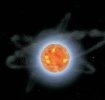 14-Nov-2008:
14-Nov-2008:
XMM-Newton and Integral clues on magnetic powerhouses
X-ray and gamma-ray data from ESA's XMM-Newton and Integral orbiting observatories has been used to test, for the first time, the physical processes that make magnetars, an atypical class of neutron stars, shine in X-rays.
Further details on the ESA News Pages
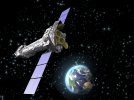 23-Oct-2008:
23-Oct-2008:
XMM-Newton talks again loud and clear
XMM-Newton, ESA's X-ray observatory, has re-established communication contact with Earth, showing that the spacecraft is safe and fully under control.
Further details on the ESA Space Science News Pages
 22-Oct-2008:
22-Oct-2008:
Reestablishing contact with XMM-Newton
During last weekend ESA lost contact with its XMM-Newton X-ray observatory. Many space agencies and organisations are now joining forces trying to fix the problem.
Further details on the ESA Science & Technology website
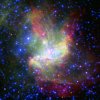 09-Oct-2008:
09-Oct-2008:
Splashy portrait paints picture of how stars form
Different wavelengths of light swirl together like watercolours in a new, ethereal portrait of a bright, active star-forming region.
Further details on the ESA News Pages
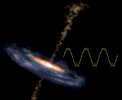 18-Sep-2008:
18-Sep-2008:
XMM-Newton detection of QPO in RE J1034+396 important for theoretical understanding of AGN
The first detection of strong, quasi-periodic oscillations (QPO) in the X-ray emission of an active galaxy (RE J1034+396) has been reported by a team of scientists from the University of Durham.
Further details on the ESA Science & Technology website
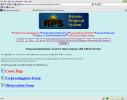 26-Aug-2008:
26-Aug-2008:
XMM-Newton 8th Announcement of Opportunity (AO-8)
The XMM-Newton Eighth Announcement of Opportunity is now open and observing proposals may be submitted.
Further details here on our XMM-Newton SOC Website
 25-Aug-2008:
25-Aug-2008:
XMM-Newton's massive discovery
ESA's orbiting X-ray observatory XMM-Newton has discovered the most massive cluster of galaxies seen in the distant Universe until now.
Further details on the ESA News Pages.
 24-Jul-2008:
24-Jul-2008:
Online Presentations of 'The X-ray Universe 2008', Granada, Spain
Presentations, posters and conference photos of the XMM-Newton Conference "The X-ray Universe 2008" are available on-line.
Check here on our XMM-Newton SOC Website
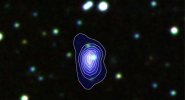 18-Jul-2008:
18-Jul-2008:
XMM-Newton discovers the star that everyone missed
XMM-Newton has discovered an exploding star in the Milky Way. Usually that would be important in itself, but this time there is a special twist. Calculations show that the explosion must have been clearly visible to the unaided eye but was missed by the legions of star watchers around the planet.
Further details on the ESA Space Science News Pages.
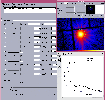 02-Jul-2008:
02-Jul-2008:
The XMM-Newton SAS Team is pleased to announce the release of SAS 8.0.0.
The XMM-Newton SAS team is very pleased to announce the release of a new version of the Scientific Analysis System (SAS): SAS 8.0.
Further details here on our XMM-Newton SOC Website.
 23-Jun-2008:
23-Jun-2008:
XMM-Newton watches lazy pulsar being jazzed up by companion
XMM-Newton has, for the first time, detected signals from both stars of a binary pulsar system in X-rays, unveiling a scientific goldmine.
Further details on the ESA Space Science News Pages.
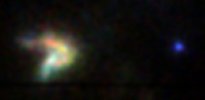 10-Jun-2008:
10-Jun-2008:
Detective astronomers unearth hidden celestial gem
ESA's orbiting X-ray observatory XMM-Newton has re-discovered an ignored celestial gem. The object in question is one of the youngest and brightest supernova remnants in the Milky Way.
Further details on the ESA Portal.
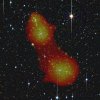 06-May-2008:
06-May-2008:
XMM-Newton discovers part of missing matter in the universe
ESA's orbiting X-ray observatory XMM-Newton has been used by a team of international astronomers to uncover part of the missing matter in the universe.
Further details on the ESA Space Science News Pages
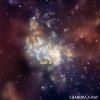 15-Apr-2008:
15-Apr-2008:
Milky Way's giant black hole awoke from slumber 300 years ago
A team of Japanese astronomers using XMM-Newton, along with NASA and Japanese X-ray satellites, has discovered that our galaxy's central black hole let loose a powerful flare three centuries ago.
Further details on the ESA Space Science News Pages
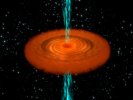 7-Apr-2008:
7-Apr-2008:
Cosmic engines surprise
XMM-Newton has been surprised by a rare type of galaxy, from which it has detected a higher number of X-rays than thought possible. The observation gives new insight into the powerful processes shaping galaxies during their formation and evolution.
Further details on the ESA Portal
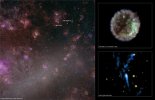 20-Mar-2008:
20-Mar-2008:
Action replay of powerful stellar explosion
Astronomers have made the best ever determination of the power of a supernova explosion that was visible from Earth long ago. By observing the remnant of a supernova and a light echo from the initial outburst, they have established the validity of a powerful new method for studying supernovas.
Further details on the ESA Website
 14-Mar-2008:
14-Mar-2008:
X-ray observations of Postoutburst Nova V5116 Sagittarii
In a recent paper, Gloria Sala et al. present the X-ray light curve and broadband spectrum of nova V5116 Sagittarii (V5116 Sgr) as observed by XMM-Newton 609 days after the nova was first observed at optical wavelengths.
Further details on the ESA Science & Technology website
 1-Feb-2008:
1-Feb-2008:
"The X-ray Universe 2008": now open for registration & abstract submission
The conference is intended to encompass a broad range of high energy astrophysics topics and we hope that it will provide a showcase for results and discoveries not only from XMM-Newton, Chandra and Suzaku but also from other current missions; the scientific potential of future projects like XEUS should be discussed at the conference.
Further details here on our XMM-Newton SOC website
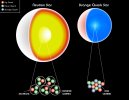 8-Jan-2008:
8-Jan-2008:
XMM-Newton gives New Insight into Neutron Stars
XMM-Newton has given astronomers and physics a valuable new insight into the most exotic stars in the Universe. Known as neutron stars, the composition of these extremely dense stellar objects has always been something of a puzzle. Now, XMM-Newton has revealed that they almost certainly resemble over-sized atomic nuclei.
Further details on the ESA Portal
